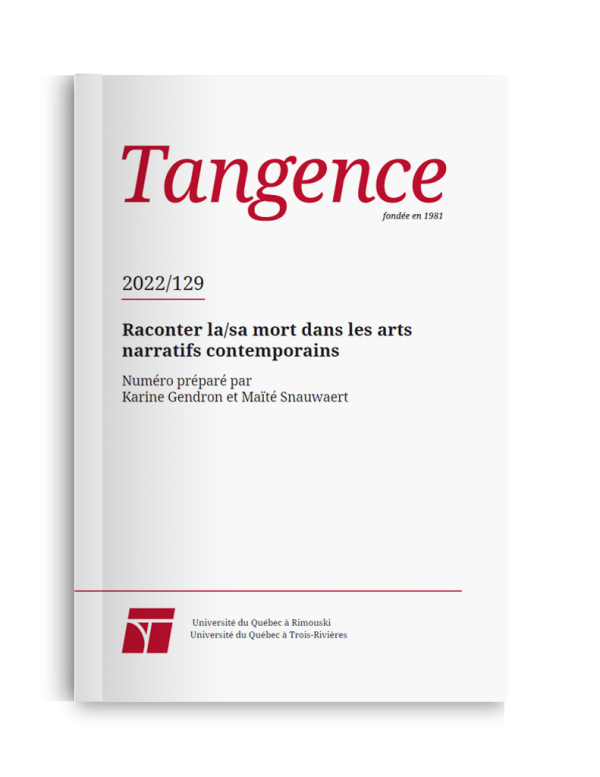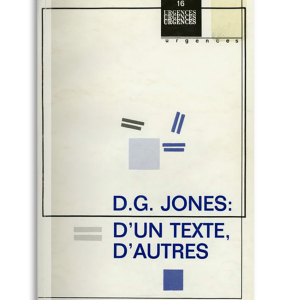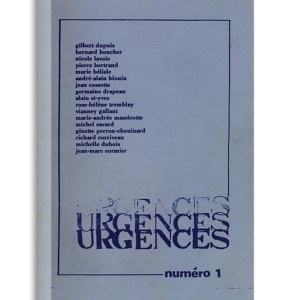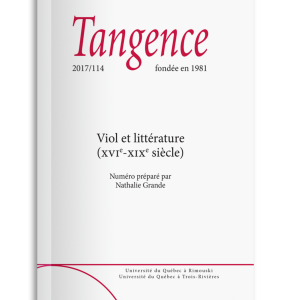The posthumous narrator killed in combat in the contemporary extreme novel (Ackerman, Meli, Miller)
Frédéric Weinmann
This article focuses on three novels that revisit a historical conflict (the invasion of Sicily during Italian unification, social tensions in 20th-century Jamaica and the second Iraq war) from the perspective of a posthumous narrator. Beyond the thematic relationship, its main purpose is to highlight similarities in the treatment of the narrator who is no longer, as in the realistic, modern and postmodern novel, conceived in the image of man, but who may be interpreted as a “being of spirit” inhabiting an individual or collective consciousness. These three examples illustrate the epistemological and narrative turning point that occurred at the dawn of the 21st century and that might be described, in keeping with Allan Kirby’s proposal, as digimodernism.
The revolt of the child-narrator in some Quebec novels at the turn of the 21st century
Karine Gendron
Since the 1980s, a characteristic of a number of Quebec novels is a posthumous first-person narrator who recounts their death. Among the examples encountered, the specific case of the dead child- narrator is examined here using three contemporary works : L’ingratitude by Ying Chen, La petite fille qui aimait trop les allumettes by Gaétan Soucy and Tu aimeras ce que tu as tué by Kevin Lambert. The overlapping points between these works are highlighted to better discuss the specific statements of the dead child-narrator, notably the narrative transgression this narrator implies and the social criticism expressed through their statements and the issues that preoccupy them (power, violence, marginalization). These novels discuss death up front, and their young narrator formulates a discourse based on a revolt against sacrifices made for the benefit of a future that is fixed and founded on transmission. For the child who dies, the enslavement of the present to the future is in vain, and death—chosen in the three works—is preferable to the servile reproduction of traditions. For this narrator, the future remains a concept both unpredictable and unachievable, two characteristics that connect, moreover, with the poetics of the authors depicting it.
The ghosts of Hydro in Tim Whiskeychan and Virginia Pésémapéo Bordeleau
Isabella Huberman
This article analyzes the representation of the ghosts of Hydro in a public art work, Iiyiyiu-Iinuu, by the Cree artist Tim Whiskeychan, and a literary work, Ourse bleue, by the Cree-Métis writer Virginia Pésémapéo Bordeleau. The contextual canvas of both works is the disappearance of Eeyou graves during the flooding caused by hydroelectric development on the Eastmain and Rupert rivers during the 2000s. Rooted in the hypothesis that the extraction of hydroelectricity destroys living environments in a necropolitical gesture, the present article examines how both works refuse erasure by representing the dead as relations that must be cared for despite and because of the transformation of the territory. Whereas Iiyiyiu-Iinuu evokes the grief of a community and creates a place of collective memory at the heart of the destruction area, Ourse bleue depicts the personal grief of a woman who communicates with the spirits of her relatives.
“We would see our death”. Writing the mise-en-scène of woman, feminism and death today : the examples of Woman and Scarecrow and La vie utile
Aileen Ruane
This article proposes to explore the personifications of Death in the plays of two feminist authors : Woman and Scarecrow (2006) by the Irish playwright Marina Carr and La vie utile by the Quebec playwright Évelyne de la Chenelière (2019). Both authors adopt the motif of Truth unveiled by the appearance of Death at the dying person’s bedside. In most of the plays, this dialogue at the threshold of death supposedly allows the hidden truths of a lifetime to be revealed, as if the person exiting the world had nothing more to lose. However what the protagonists of the plays examined here is less a final truth than a reevaluation of what they believed to be true and what Death leads them to reexamine. This article shows how the textual and scenographic work of the playwrights emphasizes the ambiguity inherent in any final moral assessment. In these two plays, feminist thought is shown as difficult to embody on a daily basis (at the present time) by protagonists who ultimately express the injustices they’ve endured only at the moment of their death, when said injustices no longer shape their future. Thus, the issue is no longer assigning value to teaching/punishment via the figure of Death, but suggesting, rather, that a discussion/dialogue, generators of polysemy, takes place at the end of life. The stage then represents a good place to communicate this feminist reflection, which is more about the ambiguity of possible lives than conveying an uncompromising moral viewpoint.
Discursive uses of death in Marie Uguay’s Journal
Catherine Parent
The Journal of Marie Uguay presents as a privileged access to the writer’s private experience during a time when foreseeable death due to illness enables reflections that shape a new relationship to both the world and a transformed self. If, by virtue of the Journal’s posthumous status, readers already know how it ends, the fact remains that the sweeping changes caused by illness and death produce a form of agency in Uguay, since the act of writing allows her to replay her fate as she chooses. Thus, this article aims to focus on the theme of death in both Uguay’s Journal and its critical reception. More specifically, the issue is to discuss writing as both a regaining control of life and a struggle for it.






